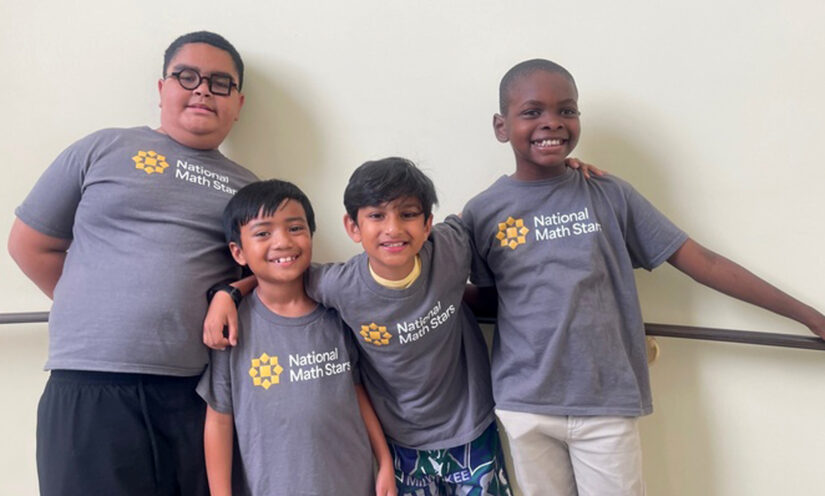By the time Xavier Cherkas was 5 years old, his college-educated mother, Ericka Lee, could no longer help him with his math homework. A gifted student, her little boy had already moved on to algebra.
“I taught him most everything up until kindergarten,” Lee said. “And then he surpassed me.”
Managing Xavier’s outsized ability proved challenging. His mother, a teacher and performer, was constantly chasing down new opportunities for him in what felt like a job of its own, one that came with numerous out-of-pocket expenses.
Lee paid a math tutor $70 a week to work with him for just 45 minutes and was constantly buying books and other materials to support him. One coding program alone cost $900. It was terrific, she said, but unaffordable in the long term.
It wasn’t until summer 2023 that she learned about a brand new nonprofit created to support high-achieving young math students with more than $100,000 in educational assistance over 10 years. Xavier was recommended to National Math Stars by an advanced math camp he attended in Ohio.
Soon, he and his mom were bombarded with help.
“Now I have a partner,” Lee said of the organization. “They are begging us to tell them what he is interested in so that they can follow up. They make things so much easier.”
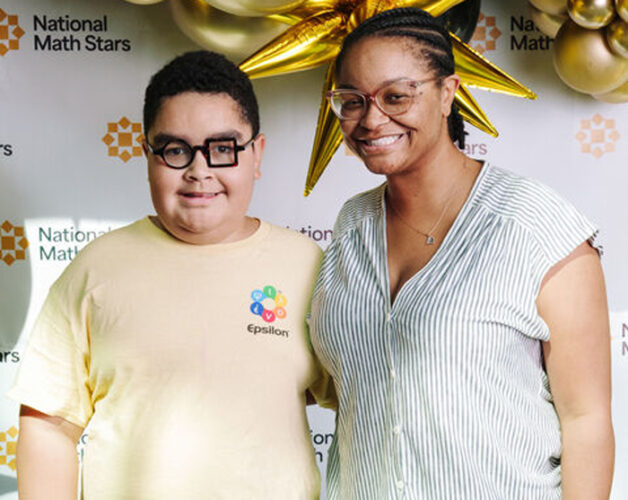
Born in June 2023 and funded by more than $16 million in grants from foundations focused on mathematics and supporting underserved youth, National Math Stars already paid for her son’s $299 3D printer and sundry items through Art of Problem Solving or AoPS, a math tutoring service that offers online classes, books and other learning tools.
The program began with 12 children from around the country and added another 61 from Texas last fall. All were between the ages of 7 and 11.
It will soon expand to the Midwest: It plans to bring on another 100 students later this year — half from the Lone Star State and the remainder from Illinois, Indiana, Michigan, Ohio, and Wisconsin. It intends to grow incoming classes to 200-plus children, as long as funding allows for the duration of their decade-long commitment.
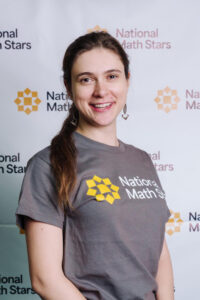
It finds participants by asking select schools — it’s in communication with more than 1,500 of them — to identify students in the second and third grade who score in the top 2% or 3% of their class on standardized math exams. Parents can also apply on their child’s behalf: Applications are now open and will close June 15.
Ilana Walder-Biesanz, National Math Stars’ founder, wants to identify and help mathematically gifted students when they are young, before factors like race and socioeconomics wear away at their opportunity and achievement.
“If we look for top performers in second grade, we’re going to have a more diverse and representative group … than if we first look for them in eighth grade or in high school, when there has been more time for the people with more resources to get ahead — and the people with fewer resources to fall behind,” she said.
Walder-Biesanz knows what it’s like to be unchallenged at school. She skipped three grades — she entered college at 15 and graduated four years later — but was another three years ahead in what was her favorite subject: She took algebra in sixth grade at age 9 and calculus in 10th grade when she was 12.
She earned her bachelor’s from Franklin W. Olin College of Engineering, her master’s in European Literature at the University of Cambridge and her MBA from Stanford. Walder-Biesanz previously worked as a product manager at Microsoft and Yahoo and later as a management consultant at Bain.
While her family was well resourced, her local schools’ math curriculum wasn’t challenging enough: She had to seek outside sources to supplement what it lacked.
She knows not all children have that chance, which is why she is focused on widening opportunity for all mathematically gifted kids.
While future classes will skew younger, the pilot included older students like Xavier to amass a group quickly and to serve as a vanguard: These children will reach middle, high school and college ahead of their peers, allowing National Math Stars time to further refine its offerings.
Xavier, 11 and who enjoys coding, said he loves math because, “It can describe almost anything if you use it right.”
The sixth grader said he’s currently trying to build a pseudorandom number generator, an algorithm for generating a sequence of numbers whose properties approximate random ones. They’re often used in programming, simulations and electronic games.
He’s also interested in pentomino tilings — think of the shapes used in the game Tetris, which have four squares and add a fifth.
“I just think it’s cool,” he said.
And, through National Math Stars, he was able to talk to the creators of desmos.com, which offers a free suite of math tools — including what Xavier calls a “super awesome” graphing calculator — to help users represent their ideas mathematically.
After being asked to speak to National Math Stars students at large, Desmos recognized some of them were already quite familiar with its offerings. Those students were invited to meet with the company’s product team and give their advice on what it could improve upon.
Xavier said he was elated to speak to people so well respected by the mathematics community.
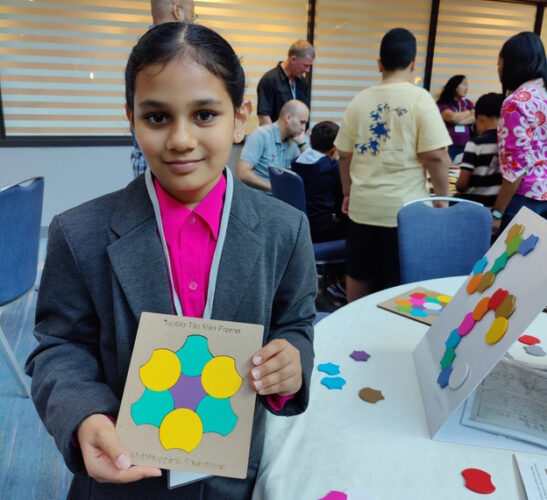
Another participant, Haripriya Patel, 9 and in the third grade, attends school online. Her mother said she breezes through her core curriculum, electives and homework in just three to four hours each day.
A part of National Math Stars for about five months, she particularly enjoyed the welcome weekend in Houston, where she and other students made mathematical origami and completed logic puzzles and math-based games.
Haripriya, who aspires to be a marine biologist, said she loves algebraic equations, geometry and number theory.
“I like problem solving,” said Haripriya, who lives in Katy, Texas. “I enjoy the process, the opportunity.”
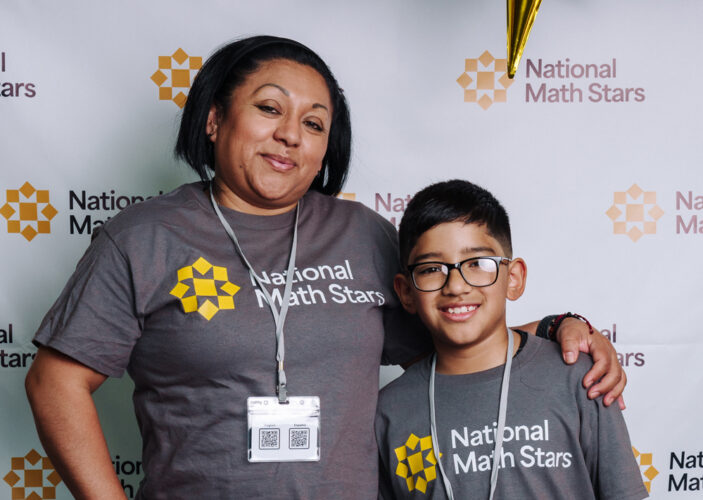
Johan Banegas, 8 and from Dallas, was thrilled to be accepted to the program because “not a lot of people can do it.”
He said school doesn’t always provide the rigor he needs and that he’s already skipped second grade.
“To be honest,” he said bashfully during a recent interview, “it’s still so easy in fourth grade.”
National Math Stars has paid for, among other items, Johan’s premium subscription to CrunchLabs, which mails him technology packs meant for teens and adults.
Walder-Biesanz recognizes that participating families are asked to make a major commitment to the program. Their children must be enrolled in advanced math courses outside of school, regularly check in with their adviser, attend weekly math mentoring sessions and STEM-related summer programs each year.
“Obviously, we fully fund that, including travel and all the associated costs, but they do have to make the time for it and make it a priority,” she said.
Johan, who wants to be an engineer, said he is determined to stick with it through high school.
“They pay for a lot of stuff and they also let us learn more than usual so we can keep on being advanced in math,” he said.
Walder-Biesanz said her organization learned much from its pilot year, including how children value in-person interaction, how participating students didn’t need tutoring in advanced math — they were gifted enough to handle it on their own — and how families from lower socio-economic levels were more hesitant to ask for money to support their students’ academic ambitions.
“We initially had a kind of free-form funding approach where we said, ‘Hey, you know, if it’s STEM related and you ask for it, we’ll probably say yes,” to telling families they had a certain budget and that “we want you to use the whole thing.”
Walder-Biesanz said her organization asks early on in the admissions process about family income and first-generation immigrant status, looking for indicators that the opportunity might be particularly valuable.
“We take that strongly into consideration as we try to put student’s scores into context,” she said. “I’m more impressed with an ESL student from a low-income family who scores 99th percentile on our admissions exam than with a super well-resourced student who scores 99.9th percentile.”
Melodie Baker, executive director of ImpactSTATS Inc., a nonprofit that uses research data and storytelling to shape and advance policies, said timely, early identification is crucial for cultivating and developing mathematical talent.
“Continuous support during formative years, especially for students who face economic stressors, can mitigate typical distractions — needing to work to help support family — and allow students to remain engaged,” she said. “Like the saying goes, while talent is equally distributed, opportunity is not.”
Walder-Biesanz said not all highly gifted children are well served by their local public schools and that it’s tragic to lose out on their abilities.
“As a country and as a world, we face a lot of big challenges,” she said. “We are going to need people with really strong STEM skills, really strong analytical ability, really strong problem solving and collaboration skills to tackle the world’s problems and to stay competitive as a country.”
Get stories like these delivered straight to your inbox. Sign up for The 74 Newsletter



